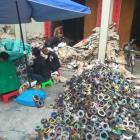Guiyu, in Guangdong province of southern China, was until recently the largest e-waste dump in the world and a hub in the global e-waste trade. E-waste is valued due to its content of precious metals such as gold and copper, sometimes richer than a commercial mine. Due to a combination of prohibitive costs and stringent environmental laws, recycling can be cumbersome in developed countries, which incentivizes export to sites such as Guiyu. Once, there were over 5,000 small, often family-run, recycling workshops in the former rice village. People worked breaking apart and melting e-waste in pots and pans; toxic smoke billowed out from improvised aluminum chimneys and covered the city in a blanket of noxious fumes, and sacks overfilled with e-waste littered the streets.

Mechanical disassembly of cables outside a workshop in Longgang.
Mechanical disassembly of cables outside a workshop in Longgang.
Photograph by Davor Mujezinovic, n.d.
 This work is licensed under a Creative Commons Attribution-NonCommercial 4.0 International License.
This work is licensed under a Creative Commons Attribution-NonCommercial 4.0 International License.
A change began in 2013, when the local government approved a plan to construct a 1.5 billion yuan (approximately €191 million) industrial park, established to house the workshops and encourage more environmentally friendly recycling. In December 2015, the park stood ready, allowing around a quarter of the workshops to move in. The rest have simply gone bust; using park facilities costs at least six to eight thousand yuan per month in rent, which reduced the income of workshops and pushed many into unemployment. Non-mechanical methods of recycling were banned outside the park, creating an effective monopoly on most forms of recycling, and making rents a major source of revenue for the local government. Simultaneously, restrictions to e-waste import were enacted, with crackdowns on rule-breakers following. Presently, the waste is predominately domestically generated.
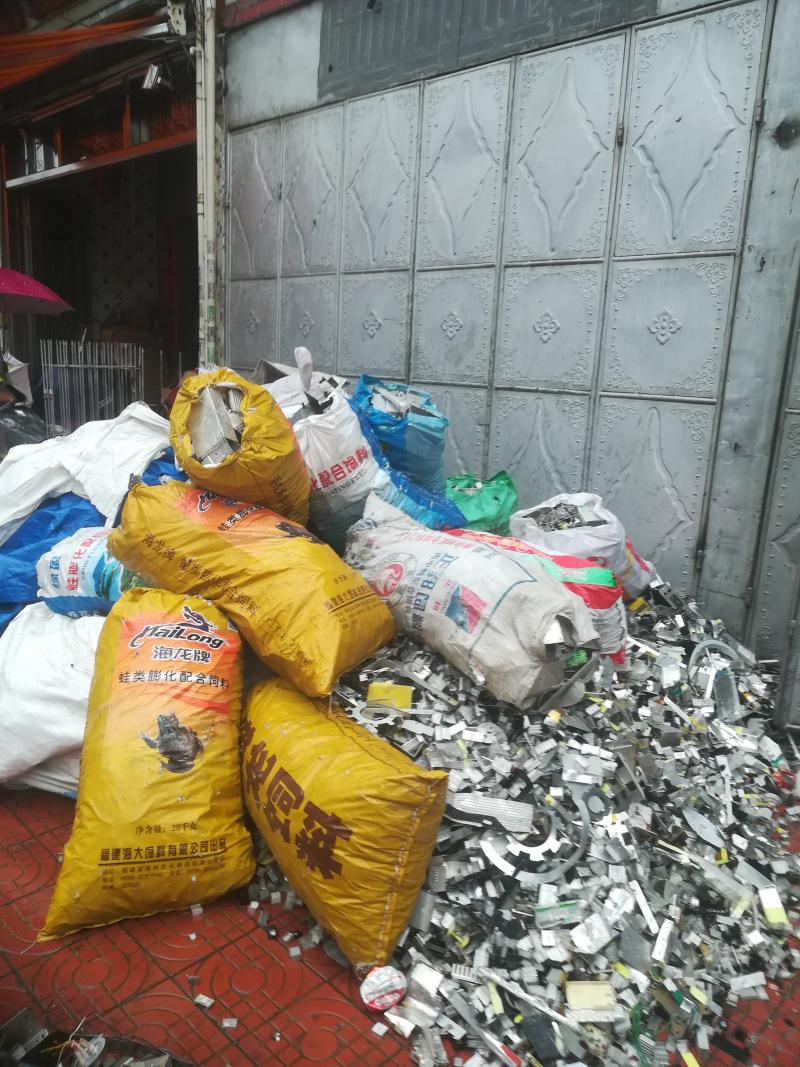
Workshop in central Guiyu.
Workshop in central Guiyu.
Photograph by Davor Mujezinovic.
 This work is licensed under a Creative Commons Attribution-NonCommercial 4.0 International License.
This work is licensed under a Creative Commons Attribution-NonCommercial 4.0 International License.
As I arrive in Guiyu in April 2018, I find a transformed city that nonetheless still bears some of the scars of its past. Most recycling has left the city center, and only a handful of workshops are left. In the city center, there is no sign of toxic waste nor appalling working conditions. Guiyu is relatively clean and well developed, and the spaces previously occupied by recycling workshops have been rented out to other businesses. There is little sign of e-waste except for the occasional litter and the bags outside the few remaining workshops. Were it not for the constant sight of trucks and rickshaws hauling e-waste around the city, one might even momentarily forget Guiyu’s past.
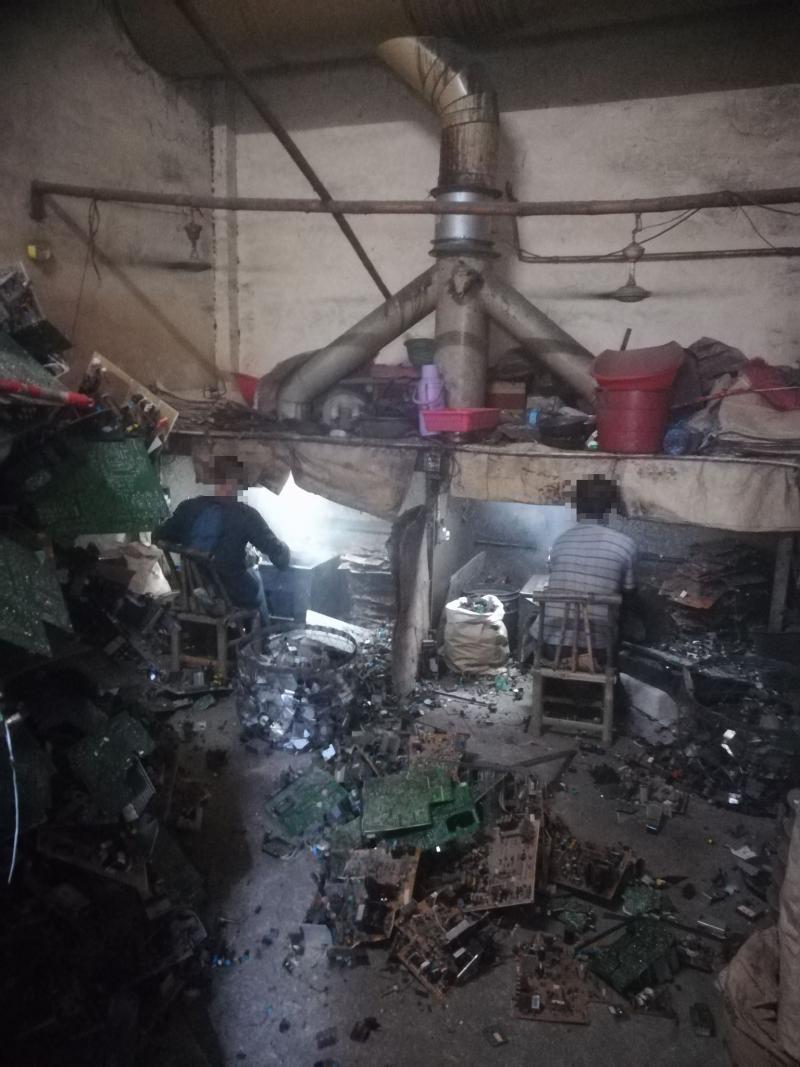
Workers submerging waste into acid in the back of a park workshop.
Workers submerging waste into acid in the back of a park workshop.
Photograph by Davor Mujezinovic, 2018.
 This work is licensed under a Creative Commons Attribution-NonCommercial 4.0 International License.
This work is licensed under a Creative Commons Attribution-NonCommercial 4.0 International License.
The park is a vast complex of large industrial hangars, smaller rooms, and multi-storied houses, each filled to the brim with e-waste. Multitudes of large, overflowing sacks stand outside the buildings. Inside, people are working on mechanically disassembling the waste with simple tools: hammers, screwdrivers, wire cutters, and pliers. The protective gear is likewise basic: gloves and a mouth-mask are worn by most, and some wear protective goggles. Further in, obscured by heaps of waste, workers submerge motherboards and other devices into vats filled with a corrosive substance; above them fans, lead the air away into filtering instruments meant to reduce the environmental impact of the emissions. Despite the fans, the ventilation is rather poor and the air reeks of a strong chemical smell, which hurts my lungs when breathing.
The bosses are not always there, as they have begun to move out of Guiyu and only visit to inspect the work. Low-level managers and overseers are on site, some just watching over the work and some taking part in it themselves. Those higher up tend to keep away from the work, preferring to stay where the air is better and observing the workers through cameras. Bosses are mostly locals, while ordinary laborers are migrant workers, and there is a huge gap in income between the two.
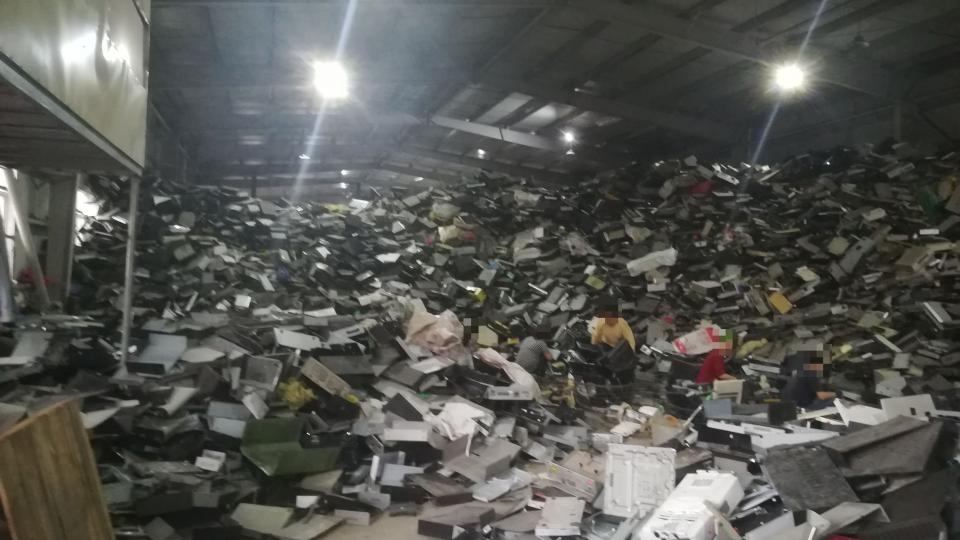
Inside a workshop in the industrial park.
Inside a workshop in the industrial park.
Photograph by Davor Mujezinovic, 2018.
 This work is licensed under a Creative Commons Attribution-NonCommercial 4.0 International License.
This work is licensed under a Creative Commons Attribution-NonCommercial 4.0 International License.
Outside the city center, the Longgang neighborhood retains most of the old recycling activity, though it is now focused on mechanical dismantling and processing plastics arriving from the park. Nurdles—plastic resin pellets—are made here, and a toy manufacturer in the nearby city of Chenghai buys a lot of them. The recycling business dominates the landscape, and waste can be seen all over, including a great deal of non-electronic garbage. Bits of plastic sit in piles outside the little houses, or are strewn all over the streets. Likely, the city center looked something like this a few years ago. Many of the buildings are decrepit and some seem altogether abandoned, though one can also see some re-building taking place here and there, and a few modern plastic factories sprouting up. The river going through the area is being cleaned up, and a lovely little park on the outskirts stands in stark contrast to the rest of the neighborhood.
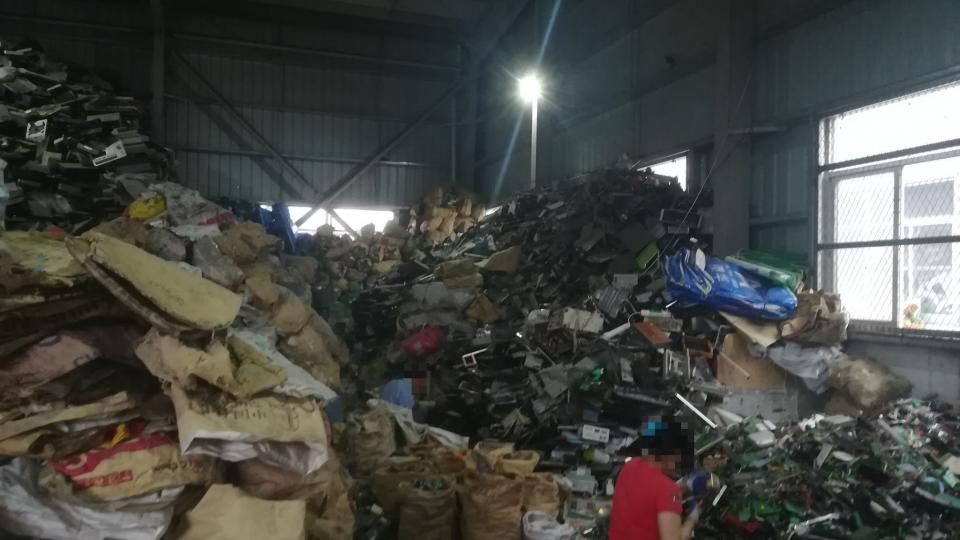
Another look at workers inside a workshop in the industrial park.
Another look at workers inside a workshop in the industrial park.
Photograph by Davor Mujezinovic, 2018
 This work is licensed under a Creative Commons Attribution-NonCommercial 4.0 International License.
This work is licensed under a Creative Commons Attribution-NonCommercial 4.0 International License.
Workers are reluctant to speak to me, at most engaging in brief conversations, especially if a manager is nearby. Yet I hear plenty of critical voices; people are aware of the problems and are concerned for their children and the environment, though they are still glad for the improvement. They all need the work, recycling being a crucial industry both for the people and the domestic industries it feeds. For some there is a sense of quiet optimism, hope that perhaps further economic development will lead to even more funds for cleaning up the area. But, it is undeniable that the common people carry the burden of improvement. The workers are still being poisoned, though less than before, and the consequences of the past largely remain. They have also become poorer, while their labor and rent payments enrich the government and line the pockets of the local businessmen, who can be spotted cruising around the park in luxury sedans.
How to cite
Mujezinovic, Davor. “Electronic Waste in Guiyu: A City under Change?” Environment & Society Portal, Arcadia (Summer 2019), no. 29. Rachel Carson Center for Environment and Society. doi.org/10.5282/rcc/8805.
ISSN 2199-3408
Environment & Society Portal, Arcadia
 This work is licensed under a Creative Commons Attribution 4.0 International License.
This work is licensed under a Creative Commons Attribution 4.0 International License.
2019 Davor Mujezinovic
This refers only to the text and does not include any image rights.
Please click on an image to view its individual rights status.
- Baldé, Cornelis P., Feng Wang, Ruediger Kuehr, and Jaco Huisman. The Global E-Waste Monitor 2014: Quantities, Flows and Resources.. Tokyo and Bonn: United Nations University, IAS—SCYCLE, 2015.
- Hopson Eric, and Jim Puckett. Scam Recycling: E-Dumping on Asia by US Recyclers. Seattle: Basel Action Network, 2016.
- Man Ming, Ravi Naidu, and Ming H. Wong. “Persistent Toxic Substances Released from Uncontrolled E-Waste Recycling and Actions for the Future.” Science of the Total Environment 463–464 (2013): 1133–1137. doi:10.1016/j.scitotenv.2012.07.017.
- Mujezinovic, Davor. Global Industrial Metabolism and E-Waste Trade: A Marxian Ecological Economics Approach. PhD thesis, Lancaster University Department of Sociology, forthcoming.
- Robinson, Brett H. “E-Waste: An Assessment of Global Production and Environmental Impacts.” Science of the Total Environment 408, no. 2 (200): 1831–91. doi:10.1016/j.scitotenv.2009.09.044.
- Tsydenova, Oyuna, and Magnus Bengtsson. “Chemical Hazards Associated with Treatment of Waste Electrical and Electronic Equipment.” Waste Management 31, no. 1 (2011): 45–58. doi: 10.1016/j.wasman.2010.08.014.
- Zewen Guan, Chi-Rong Huang, Haomin Hu, Qitang Wu, Lizhi Zhu, and Jun Wang. “People’s Republic of China: Sustainable Provincial Development Strategy for Guangdong Province Focused on Environmental Improvement in Rural Areas and Small Cities.” Technical Assistance Consultant’s Report for Guangdong Provincial Finance Department, PRC.



